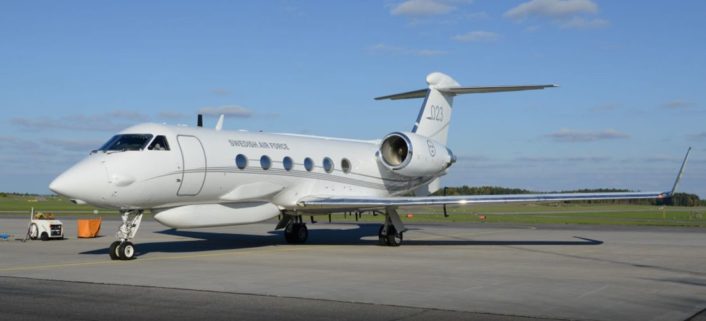A Russian fighter flies within 2 meters a Swedish Air Force spyplane, causing the Swedish minister of defence to condemn the behaviour as “unacceptable”.
In what is just the latest in a long series of close encounters over the Baltic Sea on Jun. 19, a Russian Su-27 Flanker flew dangerously close to a Swedish Air Force S102B flying an intelligence gathering mission over the Baltic Sea.
Most of times such intercepts, that have occurred in international airspace for decades, are just routine stuff: the fighter in QRA (Quick Reaction Alert) is launched to perform a VID (Visual IDentification) run on the spyplane; the interceptor reaches the ELINT (Electronic Intelligence) plane and follows it for a few minutes before returning to base.
However, according to the reports, the behaviour of the Russian Su-27 Flankers scrambled to intercept the Swedish or US spyplanes over the Baltic Sea off Kaliningrad Oblast is often a bit too aggressive and not compliant with the international procedures that would recommend the interceptor to keep a safe distance from the “zombie”: usually, 50 to 150 meters.
Indeed, according to the Swedish MoD, during the intercept on Jun. 19, the Russian Flanker allegedly flew within 2 meters (!) of the spyplane. Provided that was the distance between the two jets, the risk of collision was pretty high.
The aircraft, based on the American Gulfstream business jet but equipped with eavesdropping sensors, routinely conduct surveillance missions in the Baltic Sea.

According to Swedish Air Force officials, during those sorties, the Korpens fly in international airspace, with their transponders turned on, and regularly transmit their position to the relevant civilian air traffic control agency, both domestic and, if needed, foreign ones.
Reports of barrel rolls, aggressive maneuvers, etc. involving Russian interceptors and NATO/allied aircraft (or viceversa) have become a bit too frequent: there is a significant risk these close encounters may one day end with a midair collision, with the consequences that everyone can imagine.
Top image: file photo of a Su-27 over the Baltic Sea as seen from a Portuguese P-3 Orion
H/T Erik Arnberg for the heads up!













